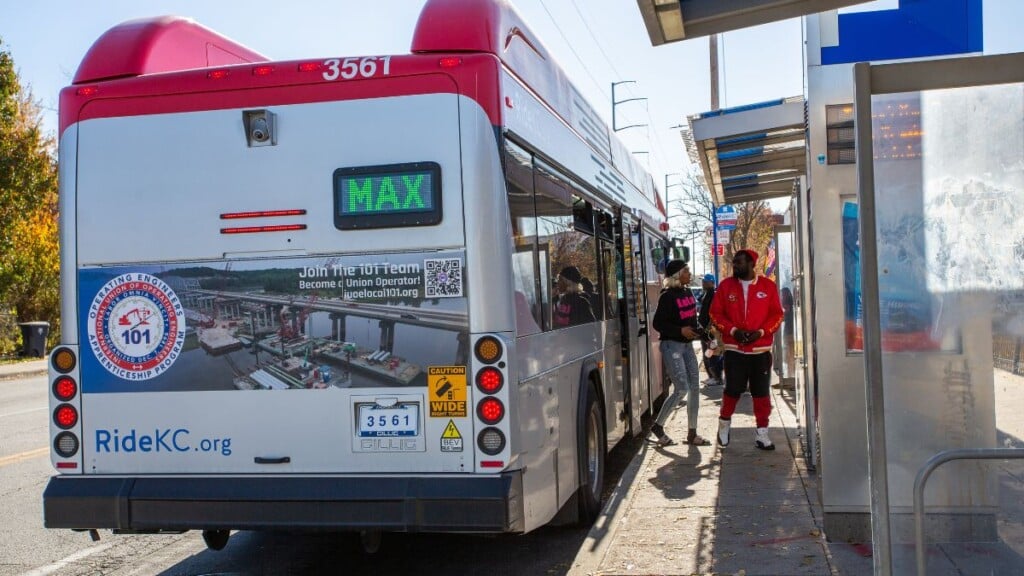The Helzberg TIF comes with costs for BNIM and for KCPS
%{[ data-embed-type=”image” data-embed-id=”” data-embed-element=”aside” ]}%
%{[ data-embed-type=”image” data-embed-id=”” data-embed-element=”aside” ]}%
Bill Dietrich, the president and CEO of the Downtown Council of Kansas City, showed up at City Hall October 14 to voice his support for a proposed new Crossroads Arts District headquarters for architecture firm BNIM. The company’s eco-friendly building design, he said, was “transformational.” He called on members of Kansas City’s Planning, Zoning & Economic Development Committee to not let up on the use of development incentives in the city’s urban core.
“These tools are needed,” Dietrich said.
His comments echo a common and increasingly loud refrain in Kansas City: Without tools such as tax-increment financing — central to BNIM’s planned headquarters at 1640 Baltimore — redevelopment is unlikely. Curtailing the use of incentives, goes this argument, would slow or even altogether halt development in the city.
For a picture of what that looks like, remember the Crossroads Arts District prior to its renaissance the past 20 years, a time when the area was a dump that couldn’t catch a break from City Hall.
In the 1980s, a Korean War veteran named Jim Leedy started the Crossroads movement with his own work and his own money. The Kansas City Art Institute professor began buying properties in the Crossroads and turning them into spaces for young artists to work and live as they were being priced out of the gentrifying Westport. Others joined Leedy over the years, including John O’Brien and his Dolphin Gallery. Most of that redevelopment in the 1980s and early 1990s was accomplished with little, if any, help from City Hall.
Developers noticed.
In 1999, the city approved incentives to promote the redevelopment of the Freight House District. Today, there isn’t an inch of the Crossroads between Broadway and Troost that’s not in some type of development-incentive zone. There are four TIF plans in the Crossroads. Most of the district west of Troost is covered by a Planned Industrial Expansion Authority zone.
While art galleries remain in the Crossroads, many of the area’s pioneers, such as the Dolphin, have moved on, replaced by different kinds of professional artists — among them, ad agencies and architecture firms.
BNIM is among the latter sphere’s foremost practitioners in Kansas City. And now the firm has been ensnared in a debate over the use of incentives.
Shirley Helzberg, a local philanthropist who owns the warehouse that would become BNIM’s new headquarters, wants to make use of TIF, a tool that diverts future taxes at 1640 Baltimore to the development itself rather than letting them go to Kansas City Public Schools, the city, Jackson County and other entities. KCPS parents last week turned in a referendum looking to put the use of incentives for Helzberg’s building to a public vote.
Kansas City Mayor Sly James put out a statement the day the petitions arrived at City Hall, lamenting this move. He told reporters with The Kansas City Star that KCPS would come out ahead financially if Helzberg’s project moved forward, contrary to the school district’s stated belief that it would lose money.
Yes and no.
Today, the unoccupied 1640 Baltimore produces $41,202 in annual taxes. Of that, $20,633 goes to KCPS. With TIF, that property-tax rate would remain the same for the next 23 years, even though the value of the property clearly would increase. BNIM’s gleaming new headquarters would replace a run-down warehouse, a relic of the Crossroads’ old dormancy. That means KCPS would still receive its $20,633 from the property each year for the next 23 years. Where KCPS would theoretically benefit: the personal property taxes likely to be collected from BNIM on equipment purchased for its new headquarters.
KCPS’s expenses increase each year, however, just like everyone else’s, so getting the same amount of money from the 1640 Baltimore property doesn’t feel like a win to parents and district leaders. Helzberg’s building has a market value of $1.3 million. Let’s say it goes to $3 million (the market value of the Vitagraph Film Exchange Building, at 1703 Wyandotte, another Helzberg property, which was redeveloped with TIF) once it’s rebuilt and BNIM moves in. Without TIF redirecting property taxes, KCPS would receive $38,339 a year from the building — $17,706 more than its annual take now.
That may not seem like a lot, but multiply it over 23 years and you get — or, rather, the district does not get — $407,239 redirected from KCPS to Helzberg’s development costs on that property alone. Now count all the properties within KCPS boundaries that are also within a TIF district. Some analyses say the total redirected sum is between $25 million and $35 million.
That’s real money.
One can argue whether all the development that has occurred in downtown and the Crossroads would have happened without TIF. But it’s all but impossible to say KC’s schools haven’t suffered real consequences as a result of TIF.




